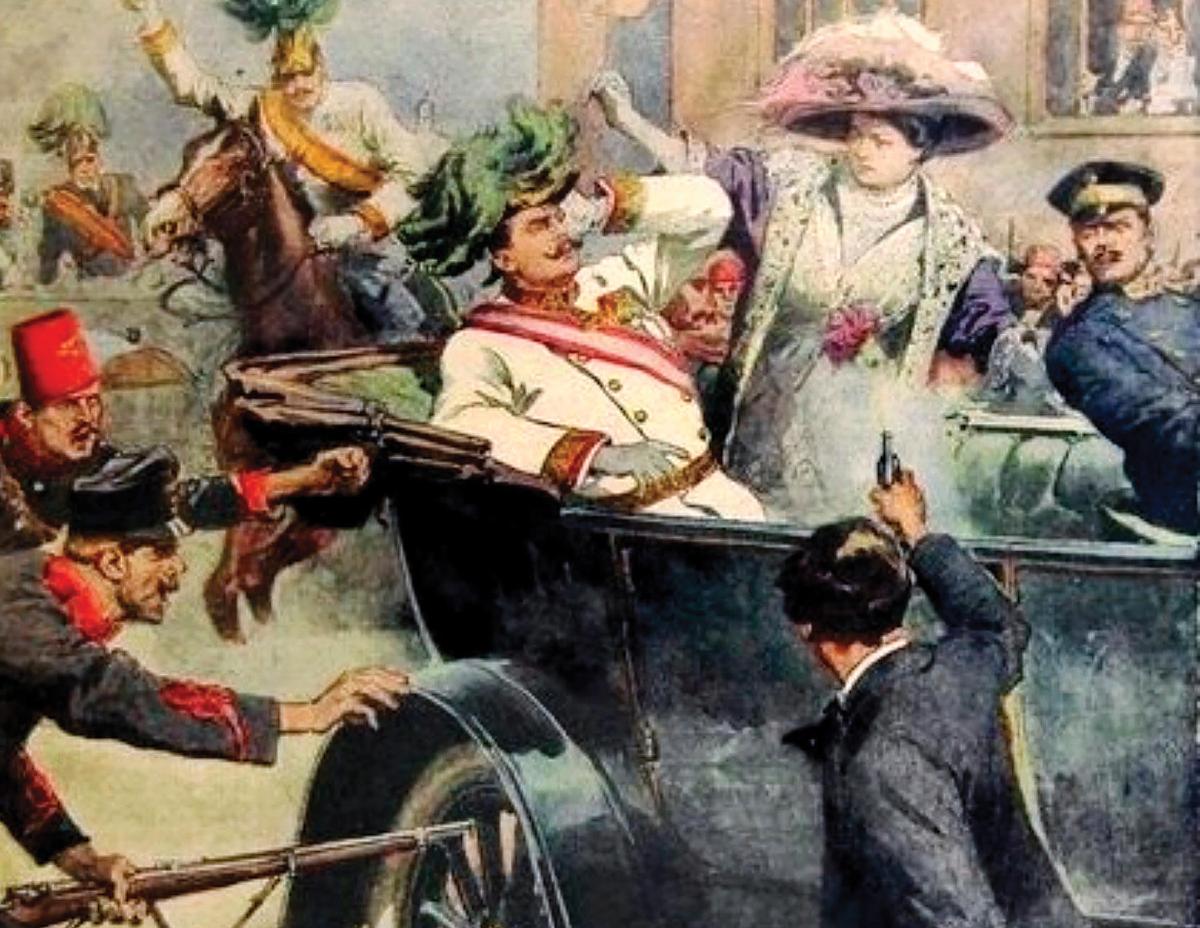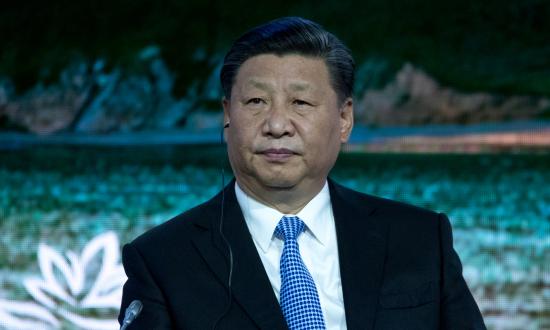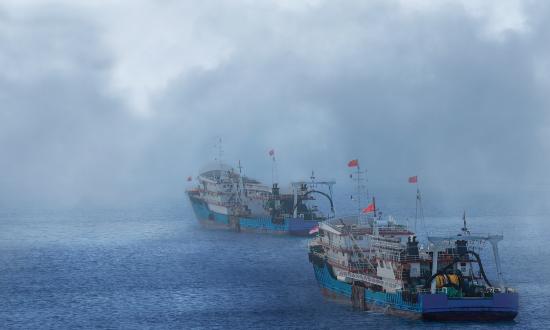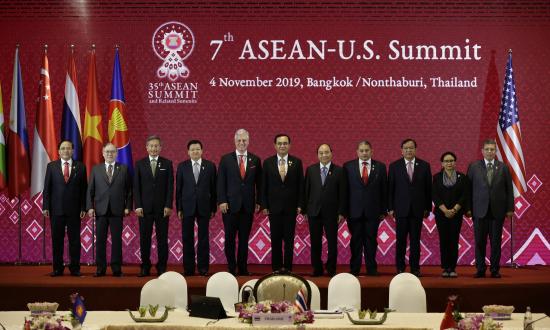Anyone attempting to predict the future is well-advised to first examine the past, for if history is not always a prelude to the future, its parallels often are uncomfortably close. In fact, history offers two crucial insights for those speculating as to where a future great power conflict will break out: First, the spark that ignites a conflict almost always flares far from the scene where major events are expected. Second, no matter where the war starts, it will be fought and decided in a single central theater, typically on the doorstep of one or both participants.
Thanks to the popular notion of a Thucydidean trap, popularized by Harvard University professor Graham Allison, it has become almost de rigueur to start any discussion of great power conflict with a hat-tip toward Thucydides, and I will not disappoint.1 For while the great historian offers many causes for the Peloponnesian War, he explicitly tells us that the war started as a consequence of events in three lesser city-states—Epidamnus, Corcyra, and Potidaea. None of these city-states were anywhere near Athens or Sparta. Moreover, the loss of any or all of them did not present either power with an existential threat. Still, despite their marginal importance to either city-state, fear, honor, and interest conspired to make their loss insufferable. Consequently, both Athens and Sparta allowed unforeseen events in distant theaters to drag them into three decades of ruinous war.
Now, fast-forward to the start of what many historians consider the first truly global war: the Seven Years’ War. Few today remember that a war that consumed almost all of Europe and was fought on battlefields throughout Europe and as far distant as India began with a small skirmish in the American backwoods. In late May 1754, a 22-year-old George Washington, with a small group of British soldiers and native warriors, encountered and massacred a party of French soldiers in the wilderness of the Ohio Valley. Historians still hotly debate the events of what should have been an historically insignificant incident, but not the consequence: a global war few wanted or expected.
Jumping to the eve of World War I, we find France and much of Europe absorbed in the Caillaux affair. On 16 March 1914, Madame Henriette Caillaux, afraid that the editor of Le Figaro, Gaston Calmette, was going to publish intimate details of her marital infidelity, walked into his office and shot him four times. Throughout June and July 1914, her trial dominated Europe’s newspapers. In fact, in most major French newspapers, the assassination of the Archduke Franz Ferdinand in Sarajevo was pushed off the front page after a single day.
Few journals took much note of ongoing diplomatic and military events until the rush to war became inevitable. While the Balkans had roiled European diplomacy for more than a generation, many considered the region’s problems almost normalized and easily manageable by astute diplomats. Few at the time suspected that two bullets fired in a region far from the great concerns of the day would within six weeks ignite a conflagration that would destroy Europe’s “Old Order” and extinguish the lives of ten million soldiers.
Something similar to these examples has occurred for almost every great power conflict in history. Taken in total, they indicate that any attempt at picking out which of today’s trouble spots is most likely to provoke another great power conflict is a fool’s errand. It makes more sense to try to determine where a future war will be contested—which, history informs us, is not necessarily going to be where it erupts. Any great power conflict is going to be fought where it is easiest for each party to get at the other; everything else is just a sideshow.
One should not infer, however, that such sidesho ws are just lesser included, as in many cases they have and will siphon off huge amounts of resources that would have been better employed in the war’s main theater. For when one is victorious in the main theater, almost everything else is gained by default, while victories in subsidiary theaters typically are strategic dead ends.
In the three above cases, the sideshows are readily apparent. In the Peloponnesian War, Athens exhausted itself because of its ill-advised Syracuse expedition. Ultimately, the war concluded only after Athens’ fleets were annihilated in the Aegean and a Spartan-led army was encamped outside its walls. In the Seven Years’ War, vast resources were employed in the secondary theaters of India and the Americas. The war, however, was won as a consequence of the titanic land battles fought in Central Europe and by the destruction of the French fleet at Quiberon Bay, within sight of France’s coast. Similarly, during World War I, enormous amounts of blood and treasure were expanded in the Middle East, Africa, and the Balkans. Of course, the war was decided in Eastern Europe and France, where huge armies exhausted themselves in a brutal four-year struggle. What happened elsewhere during the war years was, by comparison, trivial and the results inconsequential to the war’s termination.
The historical record is clear: No matter where a potential war with China erupts, it will be decided in the western Pacific, but only after both sides have endured horrific levels of carnage and loss. Similarly, a war pitting Russia against NATO may be sparked in Syria, Libya, the Baltics, or any number of other hot-spots, but it will be decided on Central Europe’s oft-used battlefields and in the Atlantic approaches.
Sideshows will, unfortunately, remain inevitable, as policy makers will be driven by an urgent need to seek out and explore less costly shortcuts to victory. But no major power has ever, or will ever, consider itself defeated because it has been bested in a peripheral theater. Consequently, planners must never lose sight of the fact that ultimate victory will be achieved only in the primary theater of operations. It is this battle that must be planned and prepared for, because, if the nation is not capable of winning in the crucial theater of operations, it also loses its ability to deter future conflicts.
Such thinking will have a profound impact on the ideas of horizontal escalation, which currently are in vogue and growing in popularity. It seems that the more policy makers and strategists ponder the immense cost of winning in the central theater, the more driven they become to find someplace else to fight. Such escapism is unavoidable, but serious practitioners of war should see it for what it is—a wasteful diversion from the one theater where any future conflict will be decided. Such waste is justified only by the small possibility that the opponent will be shortsighted enough to also take his eye off the ball and, as a consequence, be willing to waste even larger portions of his resources than we are.
Where a great power war will start is beyond anyone’s ability to predict; uncovering where it will be fought out is a much easier task. Wars, despite many diversions, are fought in the locations where opposing militaries can best come to grips with one another. They are won when one side’s military force is so wrecked that it can no longer prosecute the war and its homeland is in grave danger. This amount of damage on an opponent typically can be inflicted only in the main theater of war, as no nation is likely to see the majority of its military forces decimated in a region of secondary importance.






